Continuing our travelogue style account of my recent trip to Namibia, I’ve selected the next ten favorites to take a look at today, and I’ll include a little background and my thought process while shooting. We pick up the trail on the morning of May 17, at the Himba village, that we started to look at photos from last week.
To give you an idea of where the Himba village is, let’s start by taking another look at the map that I included in part one of this series.
We started our journey in Winhoek, where you can see the number 35 in the middle of Namibia, and worked our way southward over the first couple of days, and then as we traced our route through part two and three, we’ve gradually worked our way up the country.
The flamingos were where it says 148 about half way up the country on the coast, and then we continued north, with the shipwreck shot where it says 96, and that was also where we shot the seals, that we didn’t look at. Where you can see the number 20, was an old abandoned oil rig, which I got a couple of nice long exposure shots of, and then the 1625 and 861 was were we started to shoot lots of wildlife that we were looking at last week. Otgendunda, is the name of the Himba village that we visited, and this is the furthest north that we went, and you can see it here where it says 228 on this map.
We looked at one shot of some of the Himba children before we finished last week, and I want to look at a couple more shots today too, but I’d like to start today by giving you just a little bit of information on the incredible culture of these proud people.
Festus, our guide, gave us a talk on the Himba people over dinner the night before we visited, to prepare us. I had thought the Himba people were nomadic, but they are only semi-nomadic, sometimes spending time away from their homestead to find good grazing ground for their goats and cattle.
The homestead is surrounded by a fence made of tree branches and sticks, and inside is a circular corral. This corral we were told is where the ancestors remains are buried, but also where the livestock are kept. In the Himba belief system, the livestock are closely links to their ancestors in the corral. There is also a circle of stones about 10 meters from the front of the corral with an ancestral fire that is kept burning by the fire-keeper. We were told that under no circumstances should we walk between the fire and the corral entrance. When we asked what the punishment for doing this is, we were told, “just don’t walk across that line”.
The Himba women wear their hair in two plaits and the men wear one plait, as we can just about see in this first photo of a young Himba man. We had many of the subjects sit in the door of their huts, as the light was way too harsh outside for flattering or artistic photos. I shot this with the 24-70mm f/2.8 lens, with an aperture of f/3.5 for 1/60 of a second, at ISO 400. I used a wide aperture because I wanted the focus clearly on the face but the rest of the man’s body is slightly soft.
I also reduced the blacks slider in Lightroom to -40 for this shot, because I wanted to plug up the dark background a little more. Here we can only really see the center pillar of the hut, but without this modification, there is just a little more clutter inside that didn’t really help the shot.
That was after we’d had them move a few water containers etc. as well. They were incredibly accommodating, and even broke into a smile for us every so often. I found the best photos were when they weren’t smiling though. Although they have beautiful smiles, there initial pose is always with a very serious, almost sullen look, so most of the photos I chose were with this look.
I was kind of surprised to see the Himba wearing plastic beads, but after our few hours of photography, when they broke out their craft market, we’d see that they use all sorts of modern material in their crafts, as well as traditional material. I guess for me this just reinforced how well these people are holding on to their rich culture.
They are surrounded by and exposed to western culture and materials all the time, but they choose to maintain their own values and way of life, which I applaud. On a very different scale, this is actually one of the things I like so much about Japan. They have taken on many western ideas and values, and yet you still see lots of tradition everywhere, on a daily basis, and this makes life a richer, fuller experience in my opinion.
This next photo of Uapahongua, a young Himba woman, was shot in the same doorway as the young man we just looked at. I think they were brother and sister, but I’m not sure. Another interesting factoid from Festus is that the Himba are not monogamous. The men will often marry up multiple wives. The guy that was helping with our visit and spoke really good English introduced us to his three wives.
What I though was even more interesting, is that, in Festus’ words, “affairs are tolerated”, so families can include brothers and sisters from multiple mothers, and although this usually centers around one father, because affairs are tolerated, there is no saying that he is actually the father of all the siblings.
We also heard were that most marriage partners are decided by the Uncle of the children. There are virtually no marriages where the couple choose each other. It’s always the uncle that decides.
Again, I shot this photo with the 24-70mm f/2.8 lens at f/5.6 at ISO 800, for a 1/60 of a second. I chose a deeper depth of field for this photo so that we can see better detail in all the decoration that the woman wear, honestly. Apparently the shell that the women wear means that they are eligible for or actually married.
The orange color on their skin is because they grind ochre stones and mix the powder with a type of butter fat, and smear that on their skin. This is both to protect the skin from the harsh sun, and for cosmetic reasons. From the decorations to the extensions in their hair, which as you can see here is also covered in ochre clay, the Himba women are very particular about how they look. After every photo Uapahongua here would ask to see the back of the camera, and then nod with approval if she liked what she saw.
We also heard that the Himba never bathe, which is pretty incredible when you consider the heat in which they live. The women actually sit in smoke huts, and smoke themselves as a way to keep clean. When we set off from their homestead, we actually two women with a child each about 10 kilometers down the road, to a place where they would travel in another direction to a hospital, as the children were sick. It was quite a surreal experience to be sitting in a safari vehicle with two Himba women and children on board, but I have to say, despite them not bathing, they actually smelled pretty good. The mixture of the butter fat and the smoky smell gave them an earthy aroma that was in no way displeasing.
We had lunch under a tree at the side of an almost dried up river on this day, and then spent the afternoon tracking lions that we would not find. The following morning, as we left the lodge and pulled onto the large gravel road running through the area, something large darted across the road in the car lights, and Festus our trusty guide, immediately recognized it as a cheetah. When Festus saw something like this he was incredibly gutsy with his off-roading. Within seconds we were being tossed around as we navigated the basalt boulders strewn evenly across all terrain in this area that had not been cleared as a road.
It was still dark, but the car lights provided enough light for us to be able to make out a mother cheetah and her three almost full grown cubs. I started with my ISO set at 25600, and was able to get a few shots. If that was all I got, I’d have missed the opportunity, because it was still way too dark, even with the ISO cranked up that high. The image was being recorded on the left side of the histogram, which meant it was grainy as hell. Even at 25600 though, as the light got up, the grain became much less of a problem, and the images would have been usable, again, if that is all that I got.
By the time I shot this image though, the light had increased to the point where I could drop my ISO down a stop to 12800, and I was now exposing to the right, so the amount of grain recorded was very manageable. Apart from adding +40 on the Clarity slider in Lightroom, this shot is straight out of the camera. We see one of the cubs sitting in front of a euphorbia bush, looking quite relaxed. This was shot with the 300mm f/2.8 lens with a 2X Extender fitted, giving me 600mm.
The aperture was set to f/6.3, so stopped down just a third from wide open, and the shutter speed was 1/125 of a second. We had raised the roof panel of the safari vehicle and were resting on the roof for stabilization. I had a bean bag with me, but no-one actually filled them. The vehicles were fine to just rest the lenses on our hands, and we weren’t doing enough wildlife work to make this tiring or uncomfortable.
This next shot was just a few minutes later. I called it “Stalking Cheetah” but that’s really just artistic license. The only thing this cheetah was stalking was it’s brother or sister. The sun was coming up, and I’d changed my settings to f/5.6 for 1/160 of a second, which is basically the same exposure value, but a little hazy cloud had covered the sun, so I increased the exposure of this by 0.1 in Lighroom. Because I was still over the right on the histogram though, this shot is still very acceptable on the grain front, and I like the pose, so I was happy to be able to include it in my selection.
We watched the cubs playing, and although I got more shots, these were probably my favorites. I will probably end up picking something else out later though, as I revisit my images in another six months or so, to see what I missed.
We were out tracking lions and elephants again, and the cheetahs were a lucky bonus. Once they’d headed off down the valley, we pulled back out onto the main road, and literally within a few more minutes, a leopard darted across the road in front of us, but this time he was too illusive. We saw where he went, but we weren’t able to find him again.
As we started heading back to the lodge for breakfast, we saw a small hut on a hill, with some Himba women sitting outside, so we decided to go and see if we could photograph them. Festus negotiated with them so that we could do so. Whether you agree with this or not, the thing to do apparently is to just pay them. The village we visited the previous day were paid a small amount, and given food provisions for their time. This group got fifty Namibian dollars, which is about $5 US. We photographed them all, for about 40 minutes, and after a while I set up this shot of a young girl named Mukaandora, looking out across her land.
I like this because it shows the decorative hair extensions, and the pelt that the the Himba women wear, almost like a skirt, but just at the back. Mukaandora did not have a shell on her chest, as she was too young to be eligible for marriage. They told us she was only 10 years old, but we reckon they’d lost count somewhere along the way.
An interesting experience here was that as we were leaving, one of the women started to complain about something. I asked Festus what the problem was, and he told me that she had not been part of the original negotiation, and wanted paying for having her photo taken. I hadn’t even taken her photo, but asked how much would be appropriate, and Festus told me $20 Namibian would be plenty, so I gave her a $20 note. This is like $2 US, so not a big deal for me, but the look on her face changed instantly. She snapped the note out between her two hands, clapped with it on her palm a few times, then started clapping at having received the money. I don’t think as tourists we should spoil the locals with large sums of money, and this is why we agreed at the start of the trip that all of these kind of negotiations would go through the guides, Festus and Jeremiah. They don’t want to spoil their people any more than we do, so I was happy with the amount, and if I can make someone that happy with $2, I’m happy too.
Later this day, we drove about 50k south, to our next lodge, on the rim of the Etendeka Plateau looking out across the Klip River Valley. In the afternoon we went out for a game drive around the basalt rock strewn plateau, but the main reason we were here was to track black rhino the following day.
After descending the steep road from the lodge down into the valley, we were immediately faced with three magnificent elephants. The foreground foliage actually made it difficult to get a nice shot, but here’s one that I quite like, of a large bull. This is the only elephant shot that I didn’t feel compelled to convert into sepia, because I quite like the sandy tones here, and the greens don’t get in the way too much.
This was shot with the 70-200mm f/2.8 lens with the 2X Extender, wide open at f/5.6 for 1/500 of a second at ISO 400. While shooting this, there was actually another elephant much closer to our right, but the foliage was really spoiling the shot.
As we stopped for lunch in the shade of a large tree again, three boys sped past on their Damara Ferrari. This was the tour leader Jeremy Woodhouse’s term for the carts that we saw quite often here, that were made of old car axels, and pulled usually by donkeys. Damara was the name of the area that we were in. Earlier in the trip they’d been Kalahari Ferraris.
After lunch, we caught them up, and asked them to wait as we set up a little further down the road to photograph them from the front as they rode past. This is one of my resulting photographs. We also shot some of them speeding down a hill a little further along, but one of our local guides decided that it would be dangerous for them to do that alone, and jumped on the cart with them to help them steer, which kind of spoiled the shot. It was a better action shot, but I think I prefer this one, with the boy in the center smiling broadly as they head towards us.
For this I stopped down to f/8 to get a deeper depth of field, and selected a shutter speed of 1/125 of a second, at ISO 125. The boys aren’t quite in the depth of field here, as I focused on the donkeys, but they’re sharp enough to make this photo work I think. I’d prefer them to be a little soft than get too much of the background in focus, so I’m happy with the decision to go with f/8 for this shot.
We’d spend the entire day, literally around 10 hours of driving on the incredibly bumpy basalt tracks, and although it was enjoyable, we almost didn’t see any black rhino at all, but then, way past the time were were supposed to be back at the lodge, the guides from the lodge climbed a hill, and located two black rhino down-wind of us. The rhino apparently have terrible eyesight, but a very good sense of smell, and because we were down-wind, once they’d smelled us, they ran out of the valley where they were, further down into the valley, and we were able to get a few quick shots as they passed us on the other side of the valley wall.
I did opt for a sepia toned image here again, as the color was getting in the way, but this is more of a trophy shot that something I’m really happy with. Again shot with the 70-200 with the 2X Extender, at f/8 for 1/250 of a second at ISO 400. I actually wished I’d gone to ISO 800 for a faster shutter speed because these guys were moving pretty fast, but the movement was adequately frozen, so I got away with it. I also of course wished I’d taken my 300mm lens, but we’d been told to bring just one lens, as there wouldn’t be room for more, though that turned out not to be true. I could have placed a second lens on the seat next to me, so I was kicking myself for not just bringing it, but there’s no use crying over spilt milk as they say.
After the rhino, we started to head out of the reserve, but we were still a good way from camp. Almost an hour and a half later, still driving out of the reserve, we came across the same heard of elephants we’d seen on our way in, and they were still eating very close to where we’d seen them in the morning. I’d love to finish with this shot today, but to keep the images in chronological order, here’s one of my favorite shots of an elephant’s ass.
The light was dropping, so I increased the ISO to 1600 for this, at f/5.6 for 1/200 of a second. I converted to this sepia tone in Nik Software’s Silver Efex Pro, and added just a touch of additional structure on the elephant to accentuate the wrinkles in the skin, which I think is a wonderful feature of these magnificent animals. It might not be that obvious to shoot a butt shot like this, but I think they’re really effective, and I actually prefer this to this next shot, of an elephant from the side.
I like this because of the shape of the trunk as the elephant fed, and I’d included a bit more of the environment here. I ended up not choosing an even wide shot that I took of these, with some sky in as well, as I’ve switch around again to prefer these more intimate images, but I do like to have the surrounding in like this. Here by the way, I’d increased the ISO again to 2000, still at f/5.6 for 1/200 of a second.
The day after this, we would have another long drive to a place called Okonjima, where we’d shoot cheetah and leopard for the last few days of the tour. this is where you can see the number 995 on the map, just above the capital of Windhoek, where it says 35, right there in the middle of Namibia. I’ve selected 10 more photos from those last few days though, so we’ll conclude this travelogue series with one last episode, number five, next week. Remember that if you would like to see all of the images that I selected from this trip, you can see them on my Portfolios page here https://martinbaileyphotography.com/portfolio/namibia/.
Show Notes
Martin’s 100 Impressions of Namibia: https://martinbaileyphotography.com/portfolio/namibia/
Music used with kind permission from the staff of the Kulala Desert Lodge.
Subscribe in iTunes for Enhanced Podcasts delivered automatically to your computer.
Download this Podcast in MP3 format (Audio Only).
Download this Podcast in Enhanced Podcast M4A format. This requires Apple iTunes or Quicktime to view/listen.


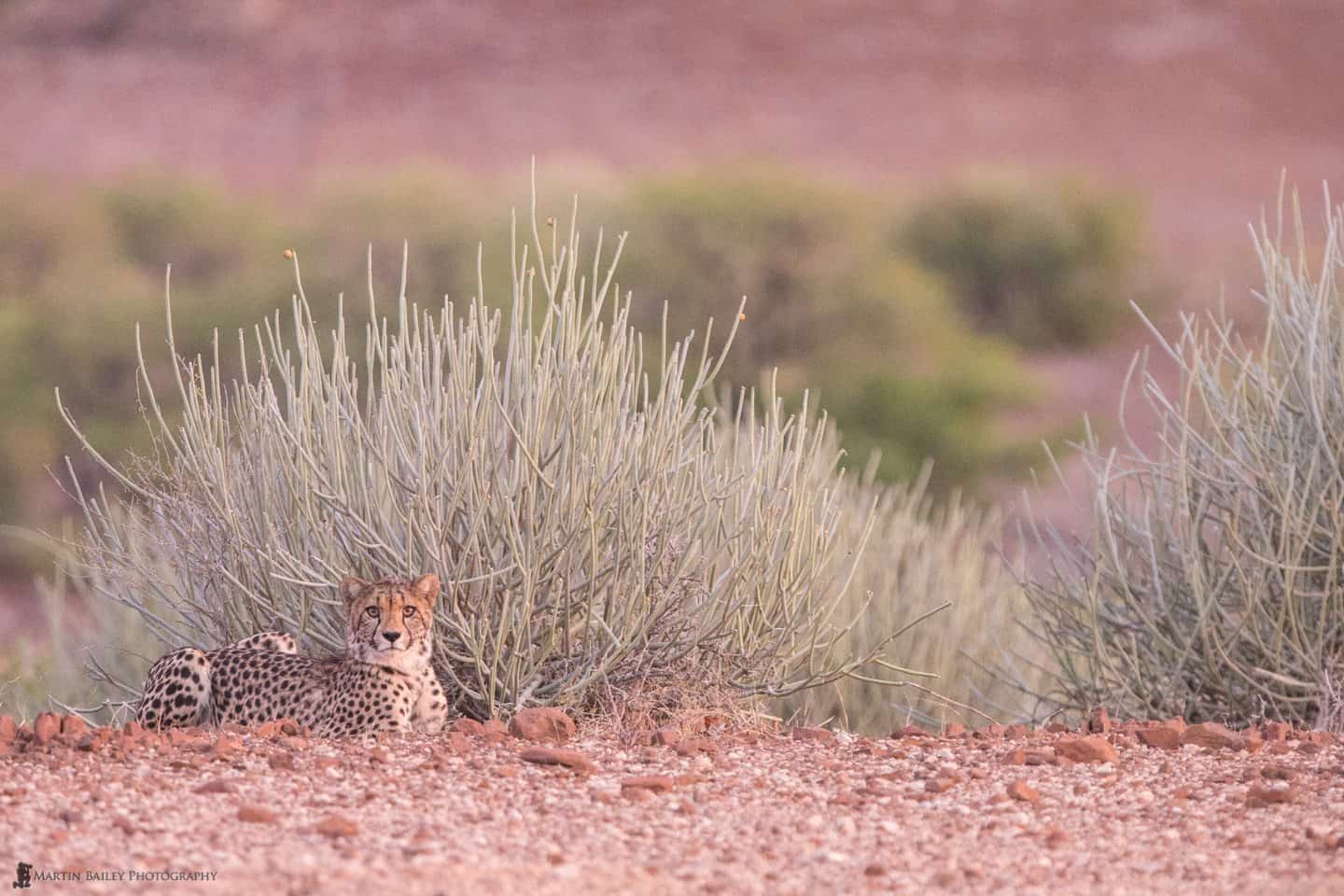
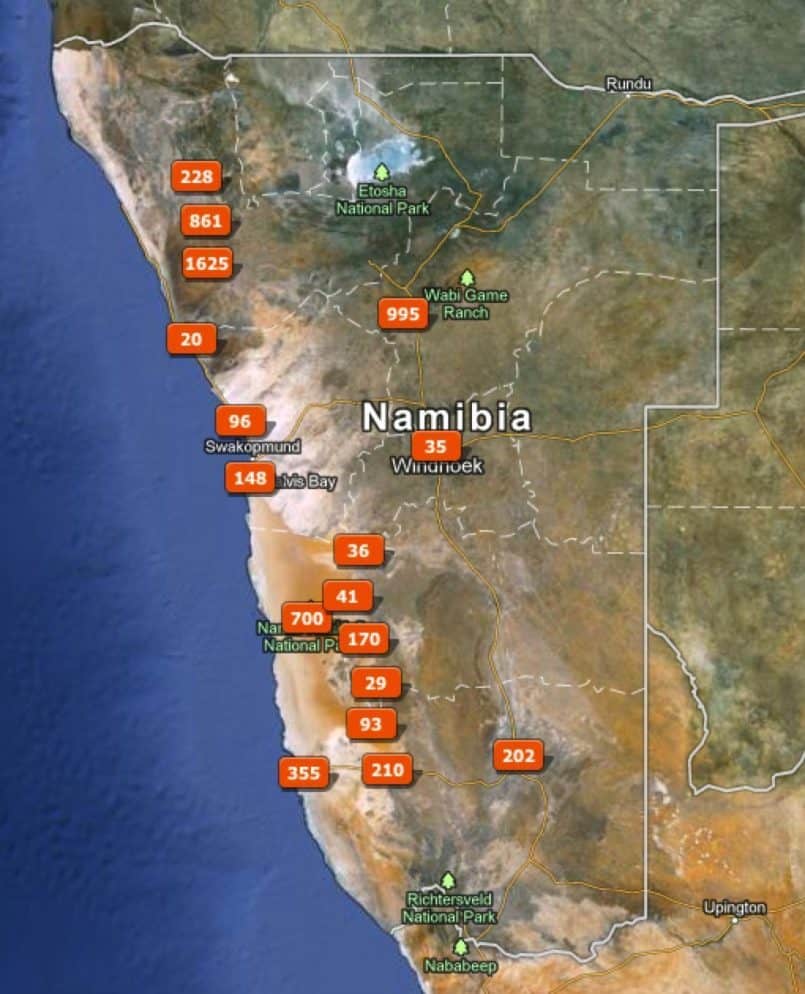
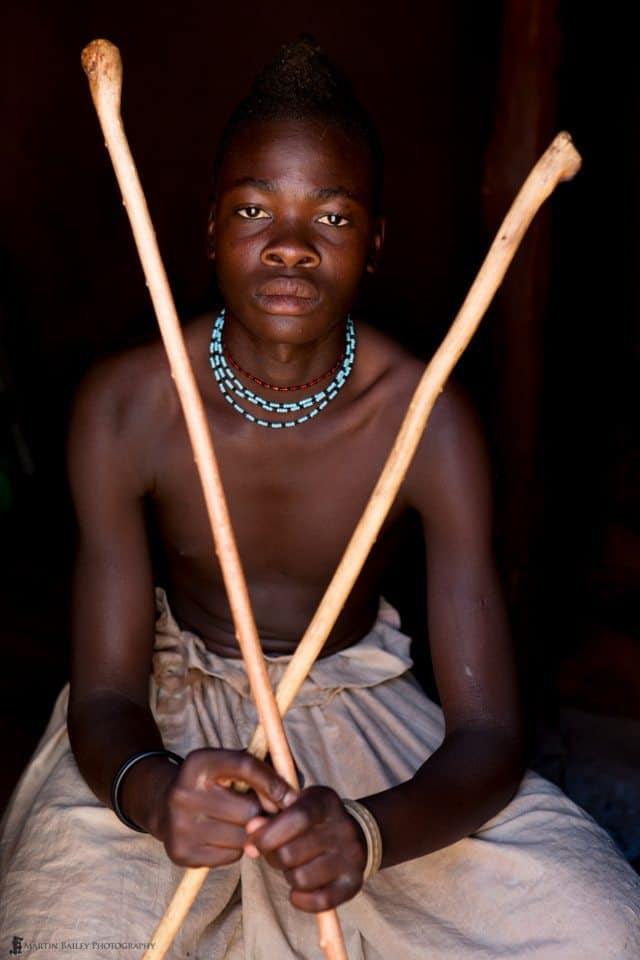
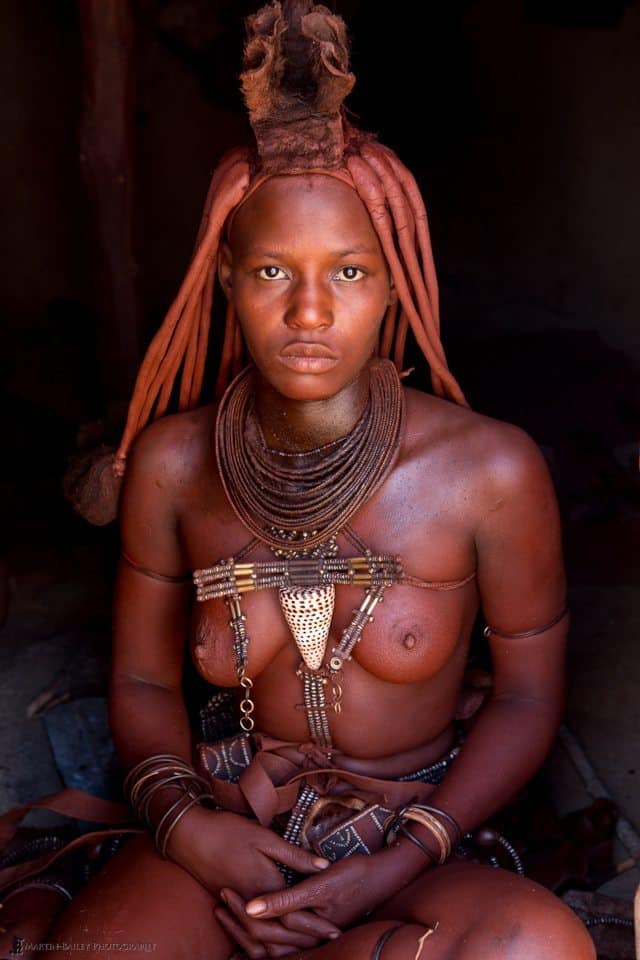
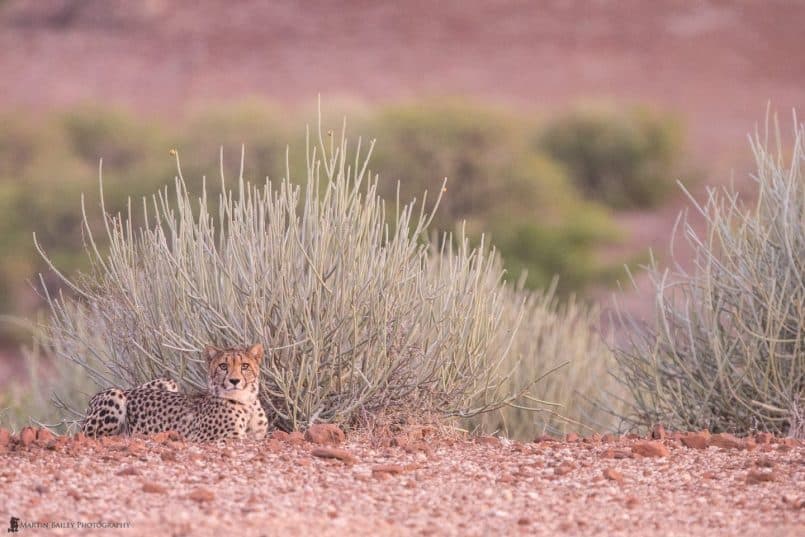
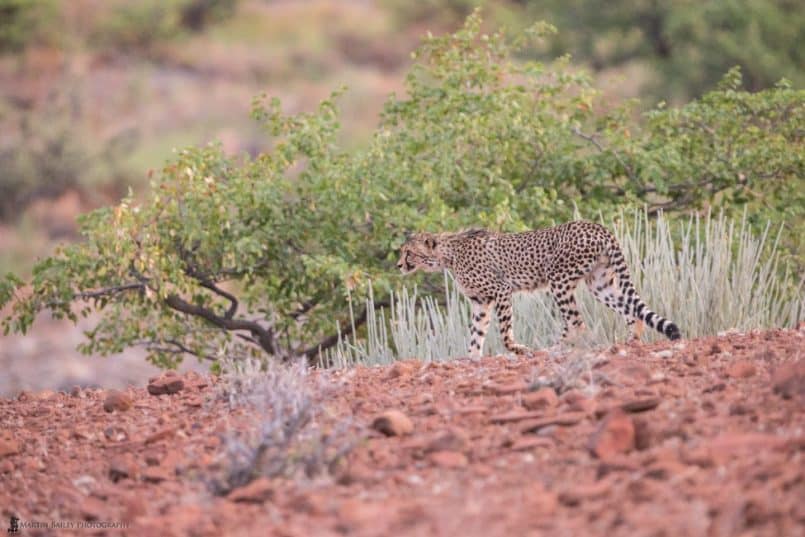
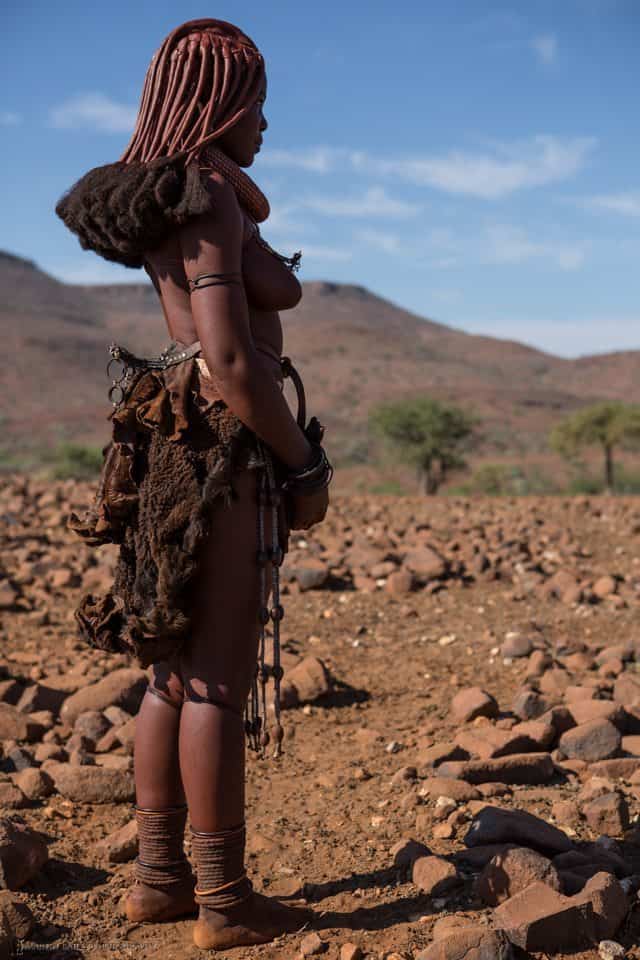
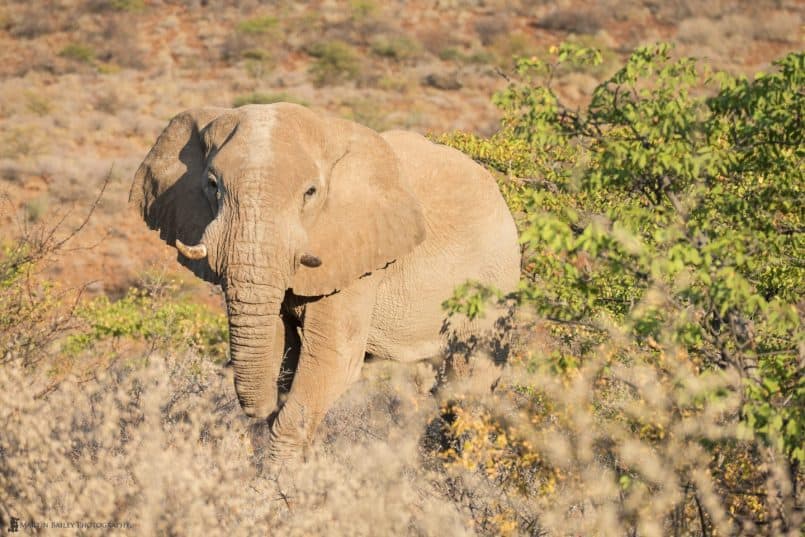
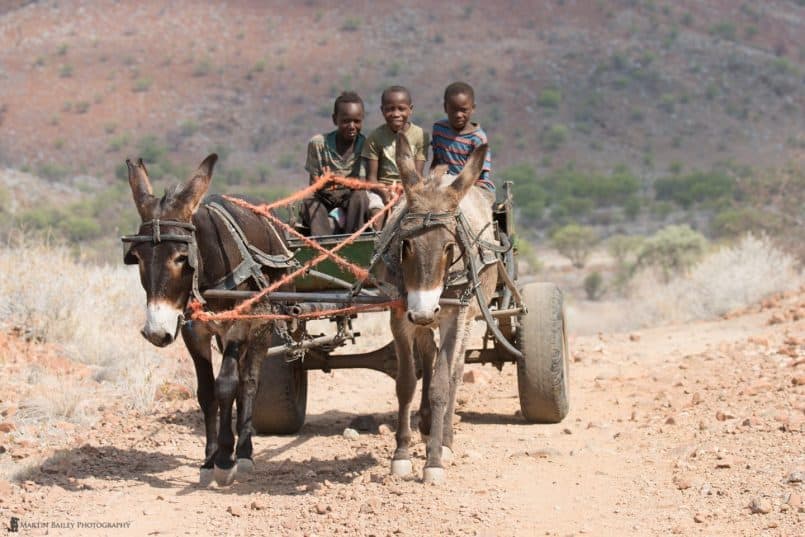
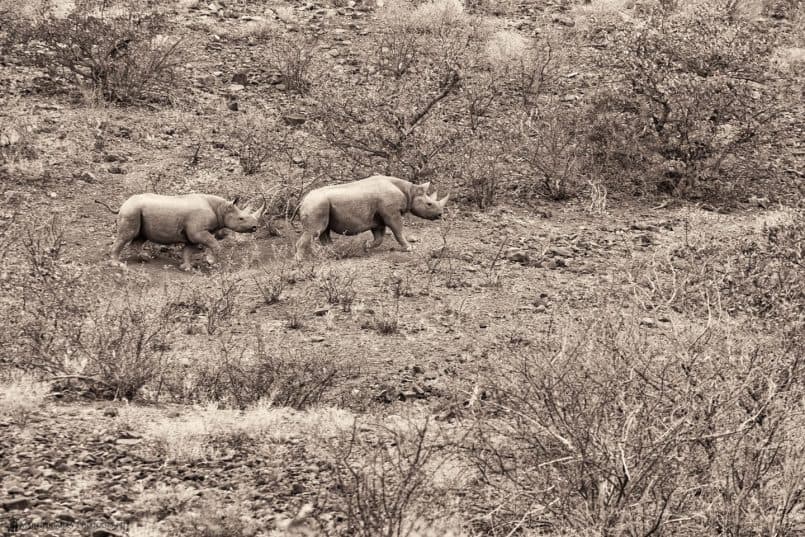
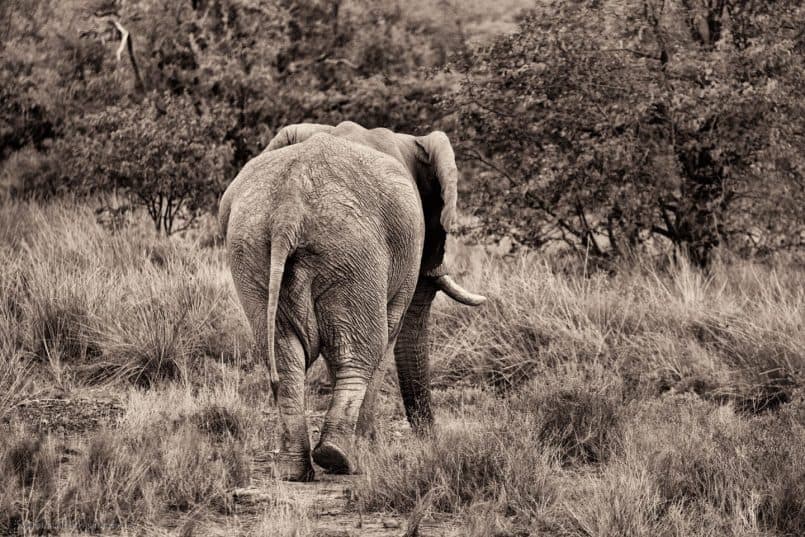
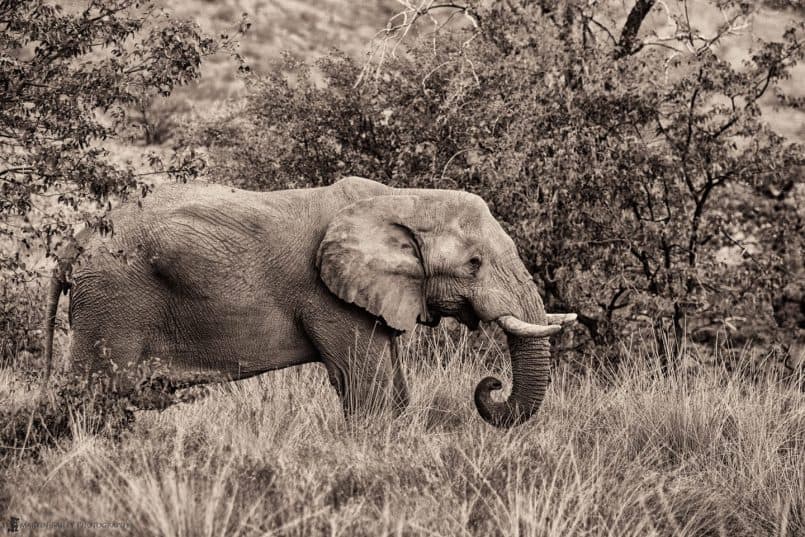

Thank you again for your photos and explanations of the subjects and technical information.
You’re very welcome Eric. Thanks for taking a look!